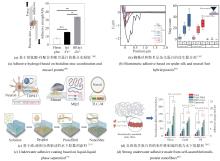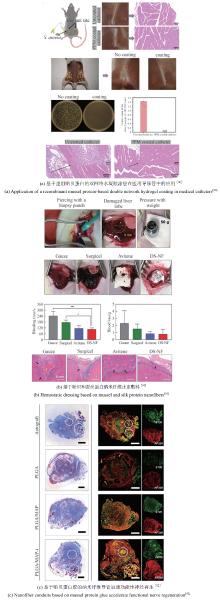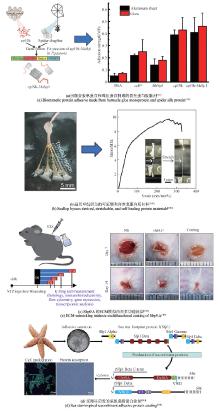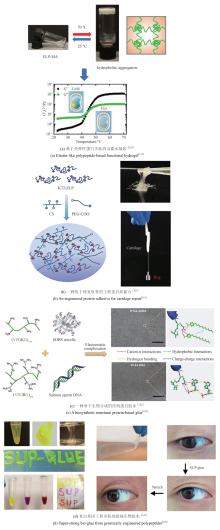|
||||||||||||||||||||||||
|
Synthetic biology and applications of high-adhesion protein materials
Synthetic Biology Journal
2025, 6 (4):
806-828.
DOI: 10.12211/2096-8280.2025-043
Due to their exceptional bioadhesive properties and potential biocompatibility, high-viscosity protein materials exhibit significant application prospects in the fields of biomedical materials and adhesives. However, traditionally sourced high-viscosity protein materials encounter numerous challenges, including low yields, structural complexity, and difficulties in scaling up production. Synthetic biology, as an emerging interdisciplinary field, offers innovative strategies to address these bottlenecks. This review systematically summarizes recent advances in the biosynthesis, modification, and applications of high-viscosity protein materials, focusing on the advantages of synthetic biology in addressing issues related to the yield, controllability, and functional diversity of these materials. The precise design and efficient expression of adhesive proteins, such as mussel adhesive proteins, barnacle cement proteins, and scallop foot proteins, achieved through genetic engineering, are comprehensively reviewed, demonstrating the overcoming of limitations in the production and controllability of high-viscosity protein materials. Furthermore, the unique advantages of these protein materials in bioadhesives and functional medical coatings, such as the wet adhesion of mussel proteins, the strong adhesion of barnacle cement proteins, and the tunable properties of elastin-like proteins, are summarized. By employing synthetic biology approaches, limitations in the yield, performance, and functionality of high-viscosity protein materials can be overcome, thereby accelerating their application in areas such as tissue engineering and surface modification. Finally, the latest advancements and innovations in the field of synthetic biology for high-viscosity protein materials are summarized, and future development directions are envisioned, offering new ideas and strategies for the development of high-performance, multifunctional high-viscosity protein materials.
Table 1
Comparison of common host cells for recombinant protein production
Extracts from the Article
宿主细胞的选择直接影响重组蛋白的表达效率、翻译后修饰以及生产成本。目前常用的宿主细胞包括细菌、酵母、哺乳动物细胞和植物细胞等,每种宿主细胞都有其独特的优势和局限性[34] (表1)。大肠杆菌是最常用的原核表达系统,具有生长速度快、培养成本低、遗传背景清晰等优点,适用于表达结构简单的、不需要复杂翻译后修饰的蛋白[35]。然而,大肠杆菌缺乏真核细胞的翻译后修饰机制,并且容易形成包涵体,导致蛋白活性降低[36]。近年来,通过优化培养条件、使用可溶性标签和共表达伴侣蛋白等方法,可以提高重组蛋白在大肠杆菌中的可溶性表达[37]。针对高黏蛋白,大肠杆菌常被用于表达Mfp-3和Mfp-5等小分子蛋白,并通过融合标签提高其溶解度。如Wang等[38]利用SUMO和TrxA两种融合标签,通过构建双顺反子表达载体进行共表达,显著提高了Mfp-3B及其杂合蛋白(Mfp-3-1, Mfp-3-3, Mfp-3-5)的溶解性表达,其中SUMO-TrxA组合使Mfp-3溶解性表达提高了18.07%。黏附能力也与商品化的贻贝黏附剂Cell-Tak相当,更适合大规模生产和实际应用。为实现Mfp-3和Mfp-5在枯草芽孢杆菌中表达,Yan团队[39]通过筛选信号肽,发现枯草芽孢杆菌中分泌的一个小的伴侣蛋白(Spy)与Mfp-3和Mfp-5融合表达产量分别达255 mg/L和119 mg/L。另外,日本Kamino课题组[40-41]利用大肠杆菌表达系统成功表达红巨藤壶(Megabalanus rosa) Mrcp19k和Mrcp20k重组黏胶蛋白,并以可溶性形式获得和纯化。
Other Images/Table from this Article
|





